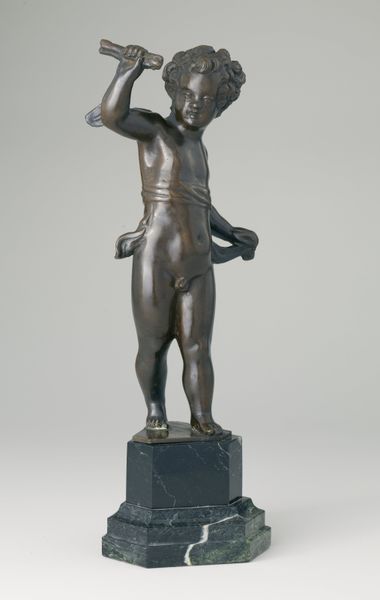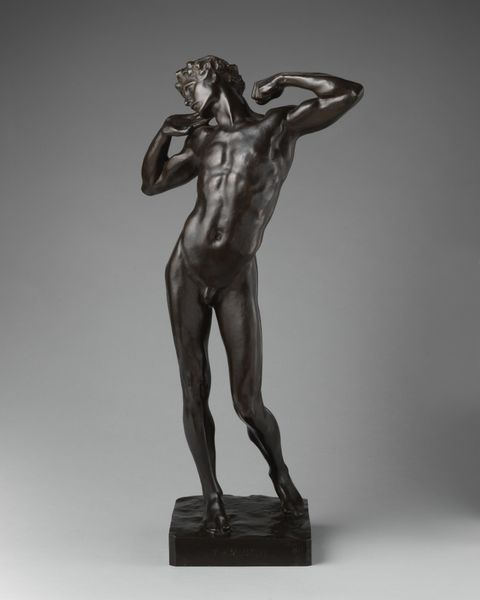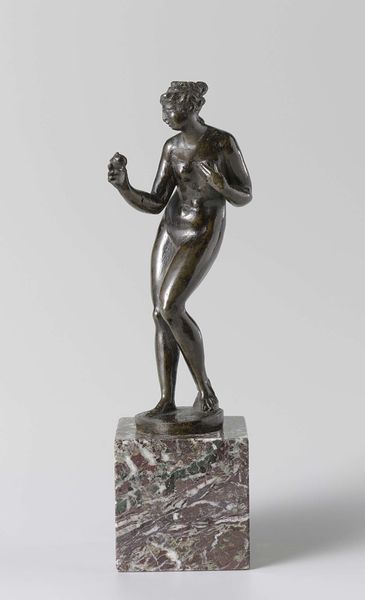
Dimensions: Overall without base confirmed: 10 1/2 × 3 3/4 × 2 7/8 in. (26.7 × 9.5 × 7.3 cm)
Copyright: Public Domain
Niccolò Roccatagliata created this bronze statuette of Hercules, carrying his club, sometime around the early 17th century. Bronze is a beautiful material, but its real significance comes from the way it's made. Consider the lost-wax casting process that would have been required here. A wax model is created, encased in clay, then melted out to leave a void. Molten bronze is poured in, cooled, and the clay broken away to reveal the finished form. It is an indirect process, one that yields a singular result, and a skilled foundry worker is needed to carry it out. The result here is this beautifully finished surface of the hero’s skin, which has the classical polish of antiquity. And yet, there is a real difference: Bronze, though labor intensive, is repeatable. We must appreciate the amount of collaboration and labour that goes into the making, alongside the artist’s initial creativity. Ultimately, the finished bronze collapses distinctions between art, craft, and industry.
Comments
No comments
Be the first to comment and join the conversation on the ultimate creative platform.













